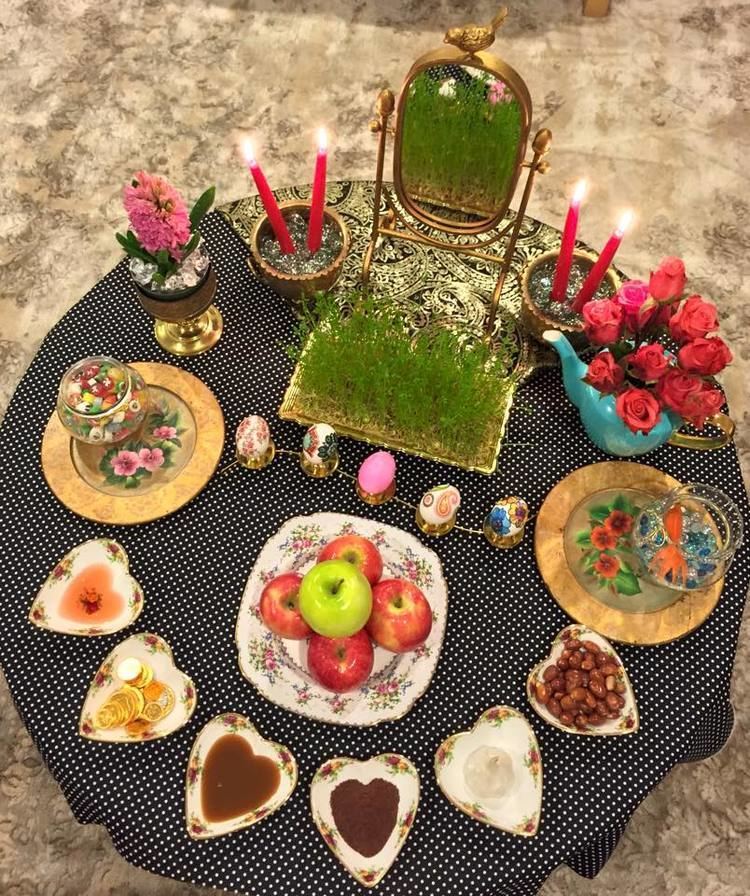 | ||
Haft-Seen also spelled as Haft Sīn (Persian: هفتسین, the seven seen's) is a tabletop (sofreh) arrangement of seven symbolic items traditionally displayed at Nowruz, the Persian new year. The haft-seen table includes seven items all starting with the letter Seen (letter) (س) in the Persian alphabet.
The Haft-Seen items are:
- Sabzeh (سبزه) – wheat, barley, mung bean or lentil sprouts growing in a dish - symbolizing rebirth
- Samanu (سمنو) – sweet pudding made from wheat germ – symbolizing affluence
- Senjed (سنجد) – dried oleaster Wild Olive fruit – symbolizing love
- Seer (سیر) – garlic – symbolizing the medicine and health
- Seeb (سیب) – apple – symbolizing beauty
- Somāq (سماق) – sumac fruit – symbolizing (the color of) sunrise
- Serkeh (سرکه) – vinegar – symbolizing old-age and patience
The following items may also appear on the Haft-Seen table as ornaments or for the sake of completeness. Although some of these items are Persian symbols, they are not the main part of the traditional Haft-Seen.
References
Haft-Seen Wikipedia(Text) CC BY-SA
